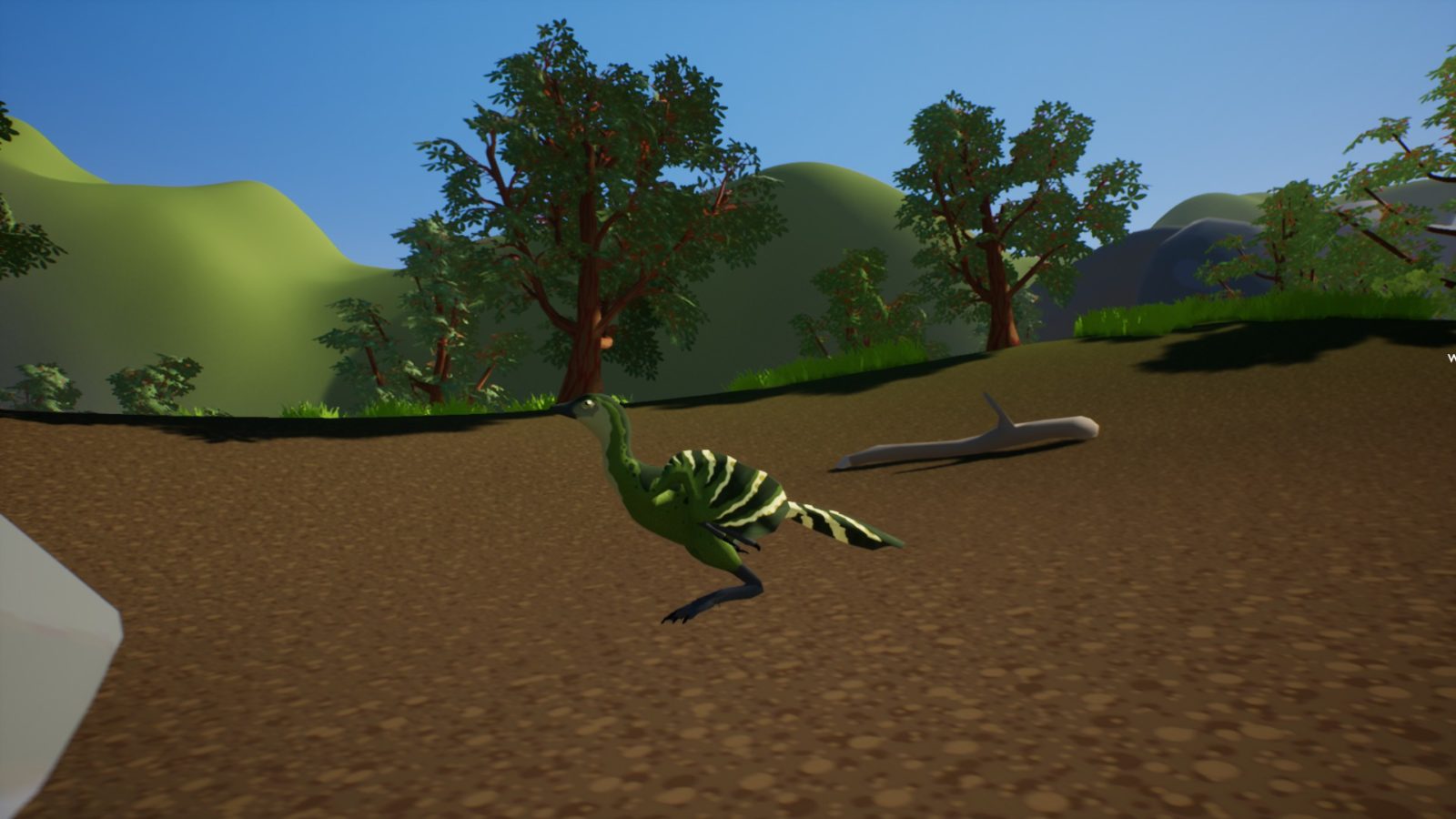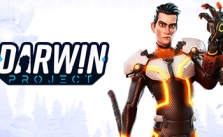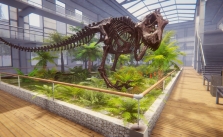The Archotek Project Dinosaur Guide

In this guide you will find all the dinosaurs in the game. In-game visuals and features of dinosaurs.
Dinosaur Guide
Archaeopteryx lithographica
Name: Archaeopteryx lithographica
Diet: Carnivore/Insectivore
Size: 38cm
Habitat: Forest
Time: Late Jurassic Germany
Archaeopteryx is the missing link between birds and dinosaurs. With the appearance of a bird, but with the teeth of a dinosaur, this is one well known creature. It is very small, so it scavenges from bigger prey, but eats insects more often. To hide from bigger predators, it lives in trees. In order to get away, it just climbs up high a tree and glides like a bird, more advanced from other bird-like dinosaurs. Its appearance mostly resembles troodontids with its sharp teeth, three fingers with claws, long bony tail, and the famous “killing” claw on the foot. This creature is a wonder to see, and well adapted to live.
Coelophysis bauri
Name: Coelophysis bauri
Diet: Carnivore
Size: 50cm
Habitat: Grasslands, Prairies
Time: Late Trassic Arizona
Being one of the first American carnivores, this scavenger feasts on unwanted food. With a slender body structure and long legs, this early predator speeds away on the grass fields. They live in packs, some of one gender. These creatures eat anything, even if it makes them cannibals, which people are meant to believe. These were the cutting edge of dinosaurs, until the Early Jurassic, with bigger carnivores, which wiped out these models. However, Coelophysis is a interesting dinosaur still to this day, and was one of the first carnivorous dinosaurs ever to live.
Deinonychus antirrhopus
Name: Deinonychus antirrhopus
Diet: Carnivore
Size: 3m
Habitat: Forests, Plains
Time: Early Cretaceous Utah
One of the best known dinosaurs ever known, the Deinonychus is a predator that bares a deadly weapon. It lives in packs, in order to take down much bigger prey, hanging on with the claw upon its foot. This claw is one of the best known aspects of raptors, used to stab into its preys neck, suffocating it, and later, killing it, taking it down. These raptors are even good mothers, they defend and take care of their children, but if one gets abandoned it would instantly forget. All these facts make Deinonychus, one of a kind of a raptor.
Gallimimus bullatus
Name: Gallimimus bullatus
Diet: Herbivore
Size: 6m
Habitat: Plains, Praries
Time: Late Cretaceous Mongolia
Gallimimus is one of the most fastest dinosaurs of all time. Being a member of the ornithomimid family, they have a slender body structure in order to survive from their apex predators. These dinosaurs live in flocks up to 50, making it easy for their enemies to hunt them, as they all stick together. They don’t have any teeth, so they eat similarly to ducks and ostriches of today. Despite the Gallimimus sticks to herds of their own kind, some migrate with larger herbivores for protection. This dinosaur is the jack of all trades, and a sonic sight to speed off.
Psittacosaurus mongoliensis
Name: Psittacosaurus mongoliensis
Diet: Herbivore
Size: 2m
Habitat: Forests, Plains, Game Trails, Logs
Time: Early Cretaceous China
Psittacosaurus is one of the smallest herbivore dinosaurs to live. It is a “unlikely” member of the ceratopsian family, being some what of a missing link. These critters often live alone, hiding in forests and plains among the grass, camouflaging with the spikes on its tail. Sometimes, the Psittacosaurus lives in herds among other dinosaurs in protection from carnivores. They often eat plants, but with such a powerful beak, it can eat nuts, even use it for defense to crack its predator’s head. This Chinese dinosaur is so wonderful, and as fossil evidence suggests, it was probably dark toned, making it, the first dinosaur we get a proper skin tone at.
Stegosaurus stenops
Name: Stegosaurus stenops
Diet: Herbivore
Size: 9m
Habitat: Forests
Time: Late Jurassic Colorado
Stegosaurus is one of the most famous dinosaurs ever known, a massive plant eater and defender. It has spikes on its tail, which it uses to impale its predators, while it may accidently kill a few small dinosaurs. They are solitary, or live in herds, and often are paired with Camptosaurus. Its other use of defense is its plates on the back. If it feels threatened, the colours of the plate go red, which scares off any creature which tries to provoke. It also uses the spike tail for getting branches off trees. This mighty herbivore defends for not just its own, but for others.
Styracosaurus albertensis
Name: Styracosaurus albertensis
Diet: Herbivore
Size: 5.5m
Habitat: Forests, Forest Edge
Time: Late Cretaceous Alberta
Not so well known as Triceratops, but the Styracosaurus is one of the best known ceratopisans of America. With its iconic frill probably used for defense and territory, this herbivore could have been a worthy opponent for small predators. It is rare for these herbivores to be solitary, and are often seen in massive herds. Being a small herbivore, it would have fed from low bushes and shrubs. Back to the frill, Styracosaurus fought for mating by ramming each other with their frill, resulting some horns being lost. Styracosaurus is small, but has a big heart to migrate and defend.
Triceratops prorsus
Name: Triceratops prorsus
Diet: Omnivore
Size: 8m
Habitat: Forest Edge, Forests
Time: Late Cretaceous Montana
Triceratops is the most famous ceratopsian dinosaur. It is always and never mistaken paired up with Tyrannosaurs rex and lived at the same place at the same time, and often thought to be fighting each other, as proven in fossil evidence. Triceratops live in herds, but also solitary. They look like proper herbivores, but fossil evidence suggests that they also eat some sort of meat, resulting them omnivores. Their way of defense was ramming their front horns into predators, but lock horns in defense. Triceratops is known for its horns, and means in Latin, “three-horn face”.
Tyrannosaurus rex
Name: Tyrannosaurus rex
Diet: Carnivore
Size: 13m
Habitat: Forests, Redwood Forests, Forest Edge
Time: Late Cretaceous Montana
Tyrannosaurus rex is the most famous dinosaur ever known; you hear T-rex, you think of it as a large bulking king. But in reality, Tyrannosaurus was really feathered, however was still the apex predator of Hell Creek, where its remains were found. Unlike most predators, Tyrannosaurs live in packs made of families, but of course, some were solitary. Tyrannosaurus also has the biggest bite force, of any land animal ever known; it could crush bone. The Tyrannosaurs, is the tyrant king of Hell Creek, and apex predator of America.




















